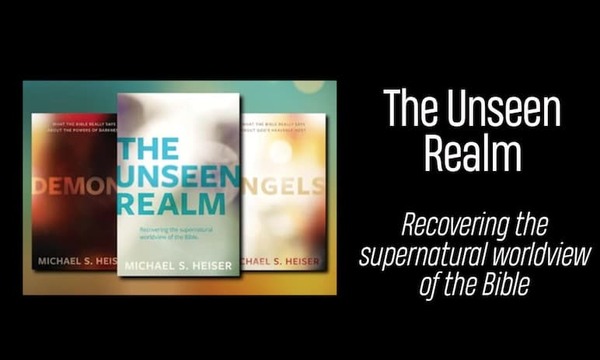When I learned Greek, there were zero Greek New Testaments produced for reading, that is, texts that included running definitions for less-frequent vocabulary on the bottom of each page. Now there are three, and you will have to choose which one to use. Here are some pros and cons for each. I’ll list them in the order they were produced:
Pros:
- This is the thinnest and lightest-weight text by far. It is easy to carry with you to class or church.
- It is the most attractive of the texts (at least when you first buy it). It sports an imitation leather cover that is supple and lays open nicely.
- The definitions (glosses) follow , but add other possibilities for particular contexts when Trenchard’s generic definitions don’t work well in specific contexts. In other words, the words on the bottom of the page are common definitions, which is helpful for vocabulary building.
- This one is a little strange…but another pro is that it is possible with a small amount of liquid on your finger to rub off the part of the front title that says “A Reader’s Greek” and simply leave the words “New Testament” on the cover. Then, nobody at church needs to know you are carrying a Greek New Testament to church. You can go undercover!
Cons:
- The imitation leather part of the cover wears off and starts to look quite ragged after some time has passed.
- The font is somewhat hard on the eyes. (Thankfully, a few years ago, the editors decided to stop using italics throughout. Still, in my opinion, the font they have employed is the worst font of the three texts I’m reviewing.)
- The Greek text is the text that underlies the original New International Version (that is, they used a “reverse-engineered” Greek text produced originally by Edward Goodrick—my first Greek teacher!—and John Kohlenberger from the textual decisions rendered by the original NIV translators). I guess this could also be viewed as a pro, since it allows you to see some different decisions from the UBS text.
- The English definitions are in paragraph—rather than list—format, so it takes more time to locate definitions on the bottom of the page in this text than it does in the other two reviewed. I imagine that this was an intentional decision with the goal of saving space. Some of us appreciate the thin size of this volume, and this is probably one of the reasons this volume is the thinnest.
- Unlike the other two volumes reviewed, parsings are not included. The only thing you’ll find on the bottom of the page are definitions. Greek teachers (like I) may consider this a pro; that’s one reason I recommend this particular text to my first-year students (and, at least currently, the UBS non-reader’s text for second-year students).
Pros:
- My review here is of the edition that includes both running definitions and occasional text-critical notes. Neither of the other texts reviewed here include textual notes. (But please note that only a few textual variants get included anyway, that is, the “places where variants from the reading of the UBS4 significantly impact the meaning of the text.” An average of one every three or so pages?…)
- The standard UBS4 text is the text employed. The UBS text continues to be the most widely-used text of the New Testament. Since this reader’s edition came out, the text has been release, including a reader’s edition—but without textual notes.
- They employ a very nice, easy-to-read font. This font is the easiest of the three to read, in my opinion. The quality of a font matters if you’re using it for a lot of reading.
- The running definitions on the bottom of each page are in list form, which makes them easier to locate than the Zondervan text reviewed above.
- Parsings are included (only for the defined words). This means that if a student (or a teacher!) is struggling to parse a word, the word gets parsed on the bottom of the page along with the definition of the word.
Cons:
- The first (and often only) definitions on the bottom of the page are contextual, that is, this text regularly includes only the one word that “is appropriate for the context” (with some exceptions). This is a huge disadvantage, in my opinion. Let us grant, and even proclaim with trumpet blasts, that words actually mean what they mean by how they are used in contexts. But most intermediate Greek students purchase a reader’s Greek New Testament for the express purpose of expanding their vocabulary while reading. The approach to defining words in the UBS text undermines that goal.
- It’s a pretty big volume. That’s OK if you are only reading at home, but will prove clunky if you try to take it anywhere.
- Only the first appearance of a word in a paragraph gets a footnote to a definition on the bottom of the page.
Pros:
- This text offers an alternate text base. (But textual notes are not included.)
- The font shape is nice, although perhaps not quite as good as the UBS text just evaluated.
- Like the UBS volume (and unlike the Zondervan volume), words get parsed on the bottom of the page.
- One really nice extra is a running list on the bottom right of each page connecting difficult-to-recognize stems to their corresponding lexical forms. This is the only volume that does this, and will be a huge help to intermediate students.
- The words glossed on the bottom of the page are for every word occurring 25 times or less in the New Testament. The other two volumes reviewed above include words occurring 30 times or less.
Cons:
- Like the UBS volume, it is also rather large and heavy. Thus, it is hard to carry around. It’s a tiny bit smaller than the UBS volume.
- The Greek text is the one produced at Tyndale House under the editorial direction of Dirk Jongkind. Actually, the publication of this Greek text is a very impressive project—and, from what I’ve seen so far, includes many good textual decisions. But, at least for the moment, it should be acknowledged that this is not the standard text most students will be using in their Greek classes. Honestly, since it is a new eclectic text, if the publishers had chosen to include the textual apparatus in addition to the running vocabulary list, it would have made this reader’s edition, perhaps, the best of the three overall.
As it currently stands, however, there are pros and cons for each of these editions, and there is not one that clearly stands out above the others. Overall, I perhaps like the Tyndale House/Crossway volume the best, but only slightly. I think I’ll keep recommending the Zondervan text to my first-year Greek students, especially while they’re learning how to parse.
Endnotes
Please note that I am using the word “definition” instead of “gloss” since most people have some sort of idea of what a definition is, whereas many do not know what a gloss is. The “definitions” found on the bottom of each page could better be referred to as glosses.
The Greek New Testament: Reader’s Edition, Greek text produced at Tyndale House, Cambridge, ed. Dirk Jongkind, assoc. ed. Peter J. Williams, assist. Eds. Peter M. Head and Patrick James; Reader’s Textual Notes compiled by Drayton C. Benner, James R. Covington, and Andrew Zulker (Wheaton: Crossway, 2018).
and other resources are available at .
 ΩÒ»’∫⁄¡œ
ΩÒ»’∫⁄¡œ



.jpg)